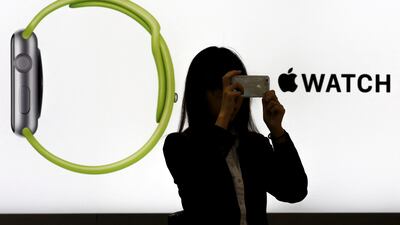
Apple's high brand loyalty and its Watch's 'excellent connection among supported iOS devices' has helped the brand dominate the market. Reuters
Apple's high brand loyalty and its Watch's 'excellent connection among supported iOS devices' has helped the brand dominate the market. Reuters
Global smartwatch shipments up 13% in Q1 2022 as Apple continues to dominate the market
The wearables market to continue growing as consumers see the value in convenience and connectivity, research finds
